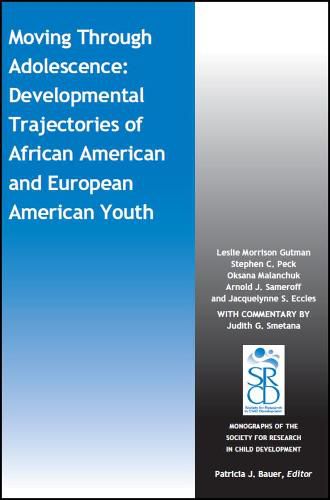Readings Newsletter
Become a Readings Member to make your shopping experience even easier.
Sign in or sign up for free!
You’re not far away from qualifying for FREE standard shipping within Australia
You’ve qualified for FREE standard shipping within Australia
The cart is loading…






In this monograph, we investigate the developmental trajectories of a predominantly middle-class, community-based sample of European American and African American adolescents growing up in urban, suburban, and rural areas in Maryland, United States. Within risk-protection and positive youth development frameworks, we selected developmental measures based on the normative tasks of adolescence and the most widely studied indicators in the three major contexts of development: families, peer groups, and schools. Using hierarchical linear growth models, we estimated adolescents’ growth trajectories from ages 12 to 20 with variation accounted for by SES, gender, race/ethnicity, and the gender by race/ethnicity interaction. In general, the results indicate that: (a) periods of greatest risk and positive development depended on the time frame and outcome being examined and (b) on average, these adolescents demonstrated much stronger evidence of positive than problematic development, even at their most vulnerable times. Absolute levels of their engagement in healthy behaviors, supportive relationships with parents and friends, and positive self-perceptions and psychological well-being were much higher than their reported angry and depressive feelings, engagement in risky behaviors, and negative relationships with parents and peers. We did not find evidence to support the idea that adolescence is a time of heightened risk. Rather, on average, these adolescents experienced relatively stable and developmentally healthy trajectories for a wide range of characteristics, behaviors, and relationships, with slight increases or decreases at different points in development that varied according to domain. Developmental trajectories differed minimally by SES but in some expected ways by gender and race/ethnicity, although these latter differences were not very marked. Overall, most of the young people navigated through their adolescence and arrived at young adulthood with good mental and physical health, positive relationships with their parents and peers, and high aspirations and expectations for what their future lives might hold.
$9.00 standard shipping within Australia
FREE standard shipping within Australia for orders over $100.00
Express & International shipping calculated at checkout
In this monograph, we investigate the developmental trajectories of a predominantly middle-class, community-based sample of European American and African American adolescents growing up in urban, suburban, and rural areas in Maryland, United States. Within risk-protection and positive youth development frameworks, we selected developmental measures based on the normative tasks of adolescence and the most widely studied indicators in the three major contexts of development: families, peer groups, and schools. Using hierarchical linear growth models, we estimated adolescents’ growth trajectories from ages 12 to 20 with variation accounted for by SES, gender, race/ethnicity, and the gender by race/ethnicity interaction. In general, the results indicate that: (a) periods of greatest risk and positive development depended on the time frame and outcome being examined and (b) on average, these adolescents demonstrated much stronger evidence of positive than problematic development, even at their most vulnerable times. Absolute levels of their engagement in healthy behaviors, supportive relationships with parents and friends, and positive self-perceptions and psychological well-being were much higher than their reported angry and depressive feelings, engagement in risky behaviors, and negative relationships with parents and peers. We did not find evidence to support the idea that adolescence is a time of heightened risk. Rather, on average, these adolescents experienced relatively stable and developmentally healthy trajectories for a wide range of characteristics, behaviors, and relationships, with slight increases or decreases at different points in development that varied according to domain. Developmental trajectories differed minimally by SES but in some expected ways by gender and race/ethnicity, although these latter differences were not very marked. Overall, most of the young people navigated through their adolescence and arrived at young adulthood with good mental and physical health, positive relationships with their parents and peers, and high aspirations and expectations for what their future lives might hold.